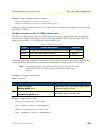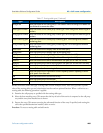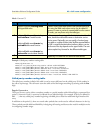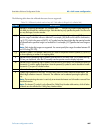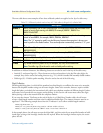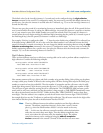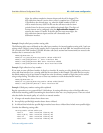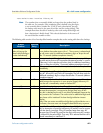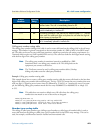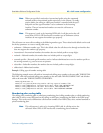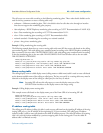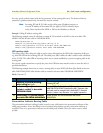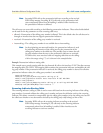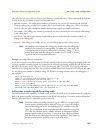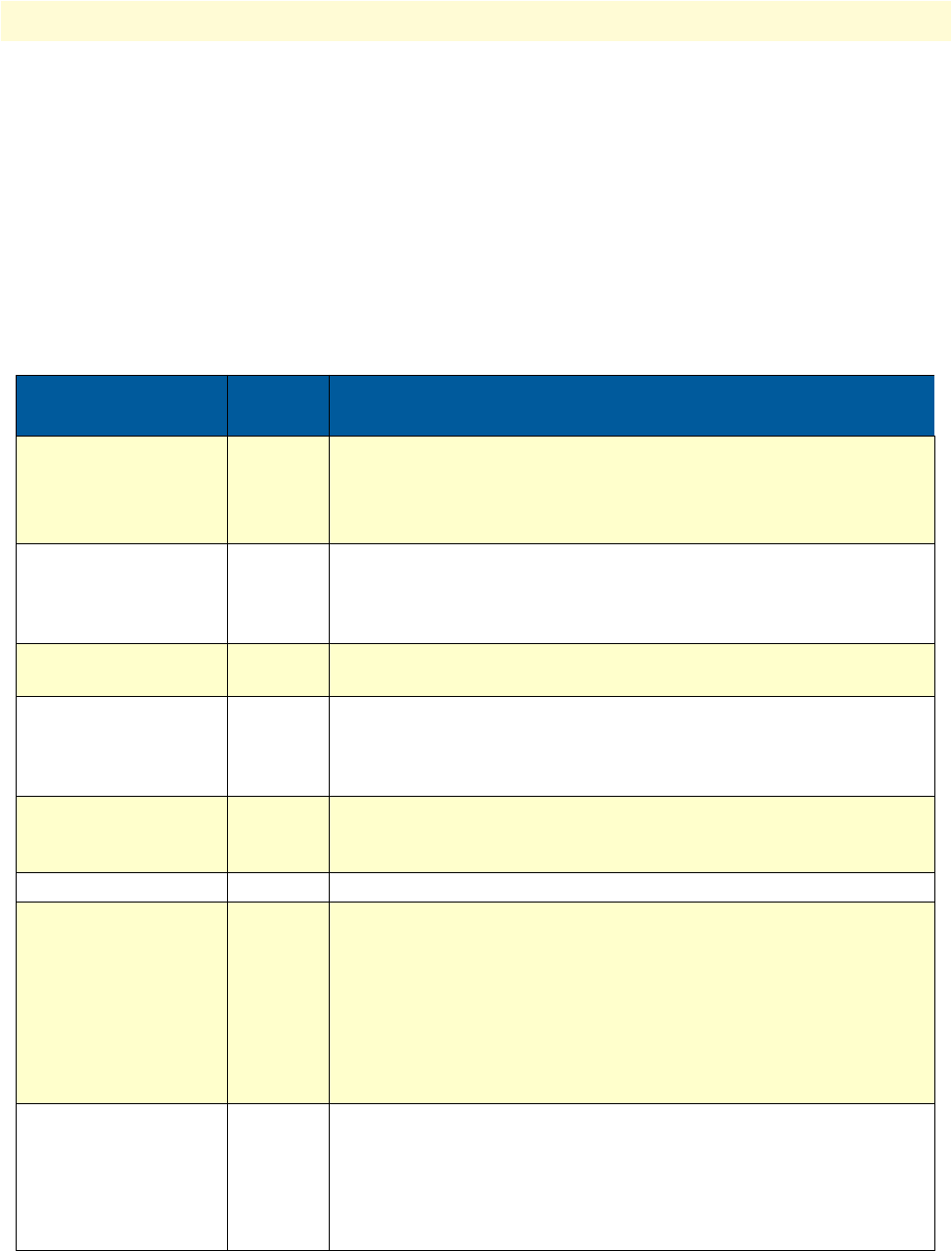
Call router configuration task list 471
SmartWare Software Configuration Guide 40 • Call router configuration
route default dest-interface IF5entry #5
Note The numbers that are normally dialed are longer than the prefixes listed in
the table test. For example, if the numbering plan is defined using five digits,
a user normally dials a number like 12345 to reach a destination. Anyway
the lookup result must be the same for en-bloc and for overlap dialing. This
example shows how the table is looked up after each overlap-dialed digit and
how a destination is finally found. This selected destination is the same as if
the user dialed the number en-bloc.
The following table contains a list of overlap-dialed number examples that use the routing table above for a lookup:
Dialed
Number
Selected
Entry
Description
empty
(after picking up the
phone without dialing a
number beforehand)
— The number is incomplete for entries #1-#4, which all want at least
know whether the number starts with a 1. Thus no entry is selected and
the call router waits for additional mandatory digits or drops the call
after 12 seconds (address-completion timeout).
1 — No entry is selected. Though the dialed number matches entry #1 there
are other entries that are still incomplete (the entered number is a prefix
of the entry). In this state the call router waits for additional mandatory
digits or drops the call after 12 seconds (address-completion timeout).
2 #5 No entry matches, so the default entry is selected; the call is placed
immediately.
11 — No entry is selected. Though the dialed number completely matches
entry #1, #2 and #3, entry #4 is still incomplete. The call router waits for
additional mandatory digits or drops the call after 12 seconds (address-
completion timeout).
12 #2 Entry #1 and #2 match the dialed number of 12, but entry #2 matches
better because the expression is more precise (longer) than entry #1.
Thus the call is immediately routed to interface IF2.
19 #1 Entry #1 is the only that matches. The call is immediately placed.
111 #4 All entries match the dialed number of 111, but entry #4 matches best
because the expression is more precise (longer) than entry #1-#3.
Entry #4 is selected but the call is not placed immediately because the
entry contains the T-indicator. The router waits for additional digits and
then places call to interface IF4 when the digit-collection timeout
elapses.
Note: If the user enters an additional digit during digit-collection on a
T-indicator, the router must not change the destination entry anymore.
112 #3 Entry #1, #2 and #3 match the dialed number of 112. Entry #1 has
only an expression of one digit while entry #2 and #3 have an expres-
sion that specify two digits. Entry #3 matches better than entry #2
because entry #3 explicitly specifies the digits while entry #2 contains
a wildcard for the second digit. Thus entry #3 is selected and the call is
placed immediately to interface IF3.



